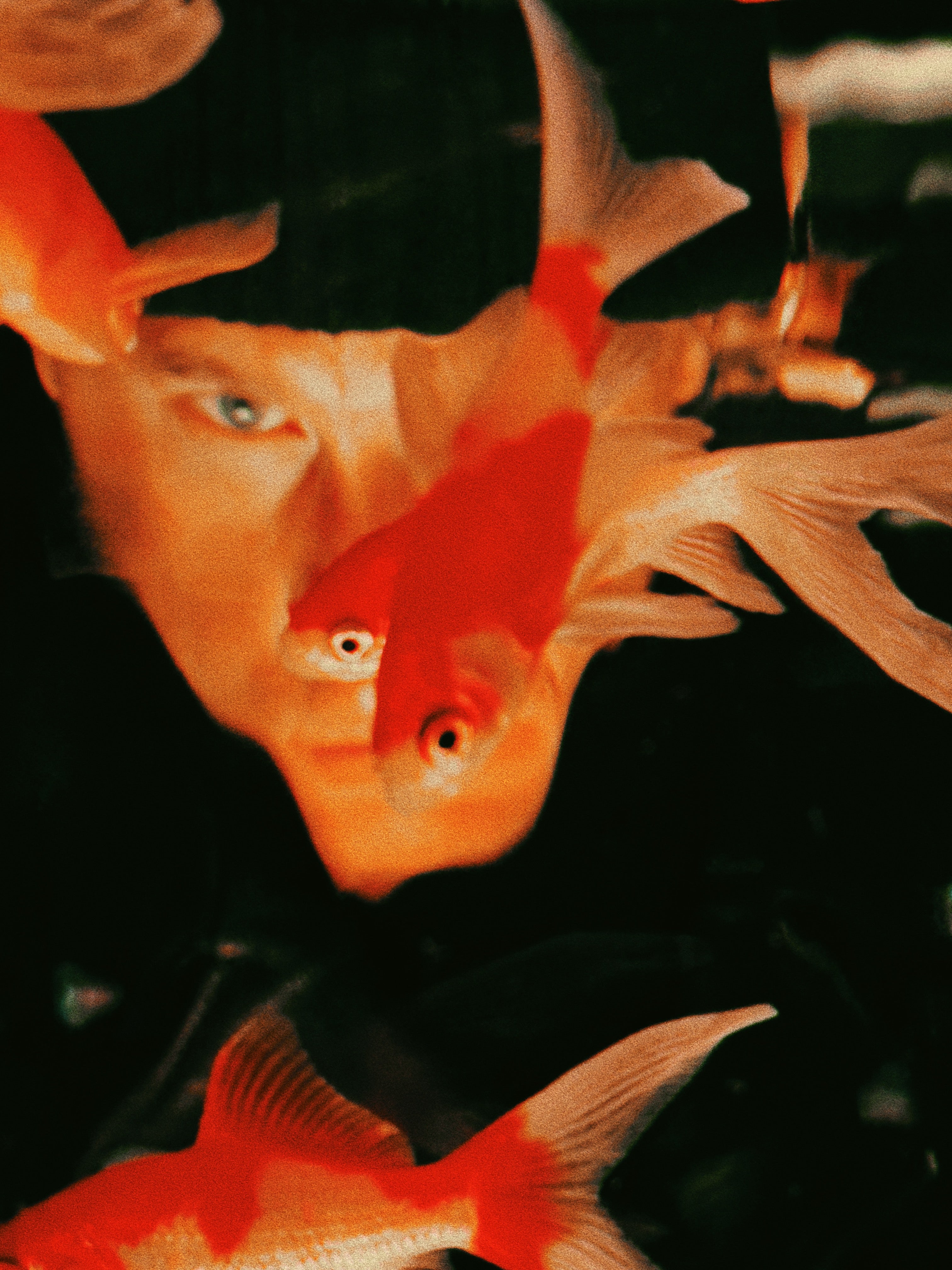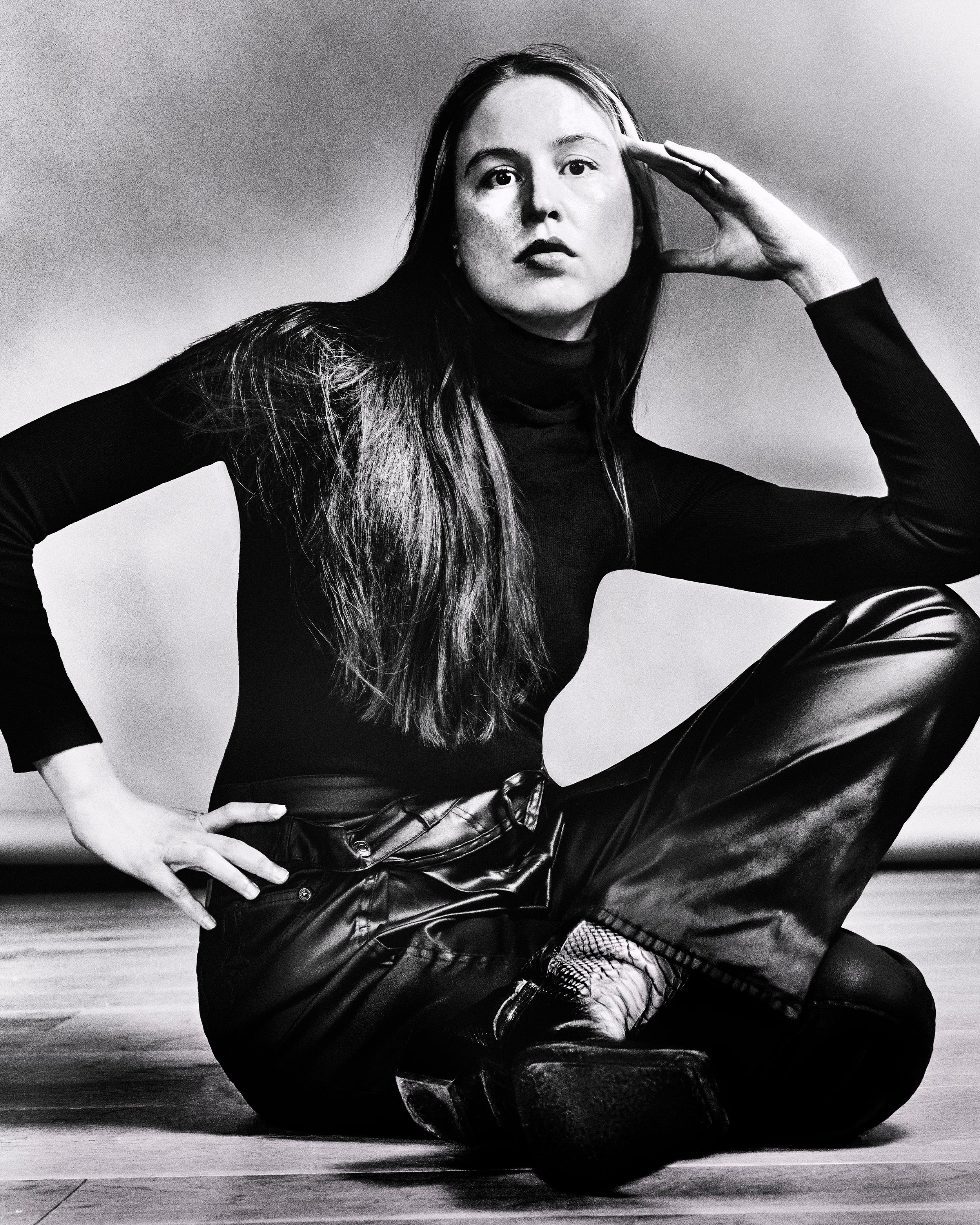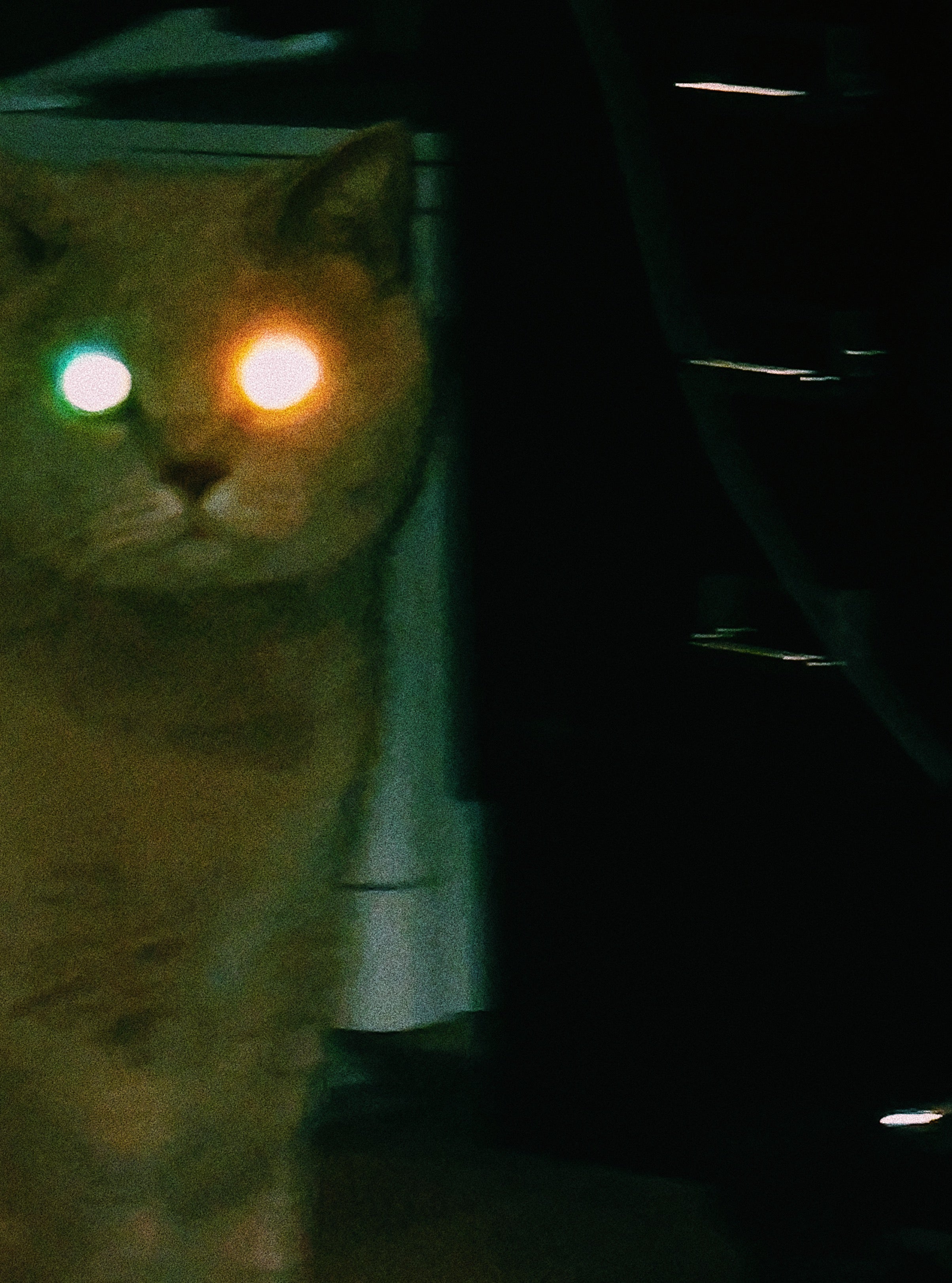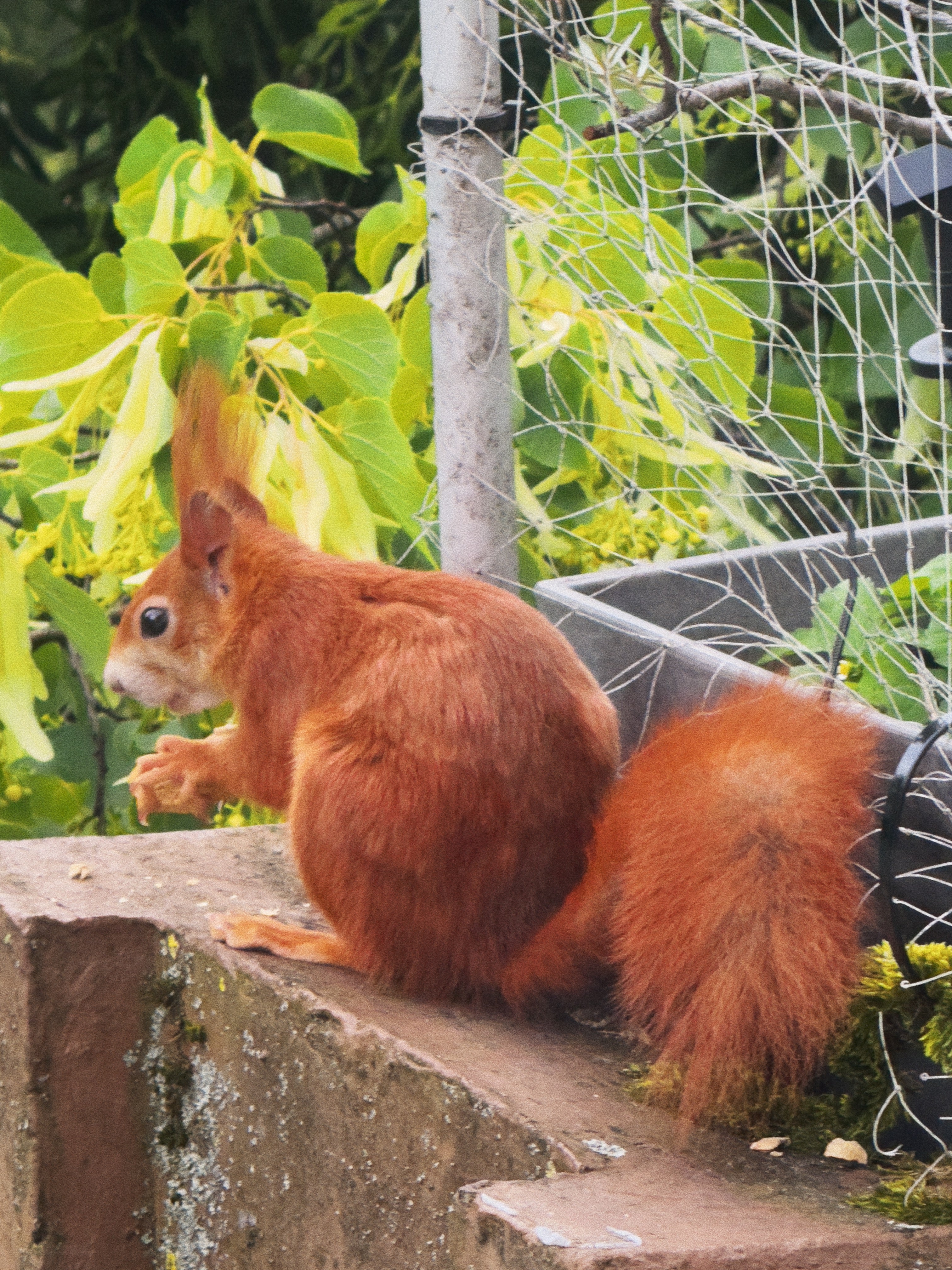
Photography by Elizaveta Porodina
Author
Jaja Hargreaves
Published
April 15, 2025
In one of Elizaveta Porodina's photographs, the model Maggie Maurer poses in a skimpy, sheer Jean-Paul Gaultier pinstripe outfit. Her hair is set in a style that evokes the flappers of the 1920s; in her hand she holds a bunch of long-stemmed flowers. Behind her is a Van Gogh backdrop of greens, blues, and yellows. It’s an image that’s emblematic of Porodina’s style: kaleidoscopic references which situate the photograph out of time entirely, and a dream-like quality that tends to linger in the mind.
For over a decade, Porodina has been creating these surreal, beautiful images that straddle the worlds of fashion and fine art. Her work has graced the pages of Vogue, Harper’s Bazaar, and Perfect Magazine, as well as campaigns for Dior, Jean Paul Gaultier, and Hermès.
Now based in Munich, Porodina was born in Moscow and moved to Germany with her family at the age of 12. Her childhood was creative—painting, writing, and music were her outlets during times of transition. She credits her early love of painting with shaping her artistic practice to this day. “I believe that we all create narratives to explain our experiences to ourselves. When I reflect on my work and emotions, I often trace them back to impressions from my childhood,” she says. “The experiences we have as children are the most profound and formative—like the moist base of a cake, if you will.”
With a background in clinical psychology, a field she studied and practiced before fully committing to photography, it’s perhaps no surprise that Porodina’s work delves into themes of childhood, emotion, and memory. These themes emerge in unexpected ways across her portfolio, work that is clearly driven by an experimental spirit that pushes Porodina to constantly challenge herself. In this interview, she discusses her transition from psychology to photography, the collaborative nature of her art, and the creative curiosity that fuels her work.
My biggest influence has always been painting
What do you think influences the colours and saturation in your photography?
To be honest, the most authentic explanation is that I’ve always gravitated toward this type of saturation and these colours. When I started painting as a child, that’s how I saw and depicted the world. For better or worse, I have always craved more intensity — I needed people to express themselves clearly, and I needed things to be especially vivid in order to reach me. That desire for intensity is reflected in my own expression.
Beyond that, my biggest influence has always been painting. My understanding of colour, composition, light, and shadow comes from the world of painting rather than photography or anything else. That’s the lens through which I see and create.
Which painters do you think may have influenced you?
So many. As a child, my mother and I would spend hours poring over the endless books in our apartment. I’m not sure if it was a deliberate educational effort on her part, or simply something she enjoyed, but our shelves held a mix of fairy tales, picture books, and books on incredible artworks from around the world. I never viewed this collection with any kind of reverence or formality, I just read what I liked.I was equally drawn to Henri Matisse and Paul Gauguin as I was to Peter Paul Rubens, Edgar Degas, or Egon Schiele. I also loved Russian painters like Petrov-Vodkin. While he may not be as globally known as Matisse, his unorthodox use of colour, and especially the way that he conveys emotion through colour, left a lasting impression on me. That reliance on colour as a reflection of an emotional state is something that I carried with me from studying paintings through to my own photographic practice.

Portrait of Elizaveta Porodina
The concept of time is very present in my images
Your photographs often possess a timeless quality, with models that transcend specific eras and colours that defy current trends. I’ve often wondered where that sense of timelessness comes from?
I think the concept of time is very present in my images, from both perspectives. In terms of eras, for example, my work isn’t evoking a distinctly Victorian or 1930s period— it exists somewhere in between. That’s something I can consciously control as an artist, by mixing and matching styling elements, adding or subtracting pieces, and arranging scenes in a certain way. I also experiment with expressions to add a twist to images, creating a blend of references and props which don’t belong to any particular time period but feel uniquely mine.
How does collaboration come into your work?
The way I create art is intentionally collaborative. Art is my best form of communication — it’s a way to connect and exchange energy with others. Whether it’s a commercial or personal project, the process remains the same. There’s no sense when I am working of, ‘This is just my thing, and others are following along’. Instead, it’s about arriving at a shared vision that everyone aligns with. I wouldn’t say the idea comes solely from me — if it’s a good idea, it belongs to everyone. We’re all working together, moving toward that shared goal.
You initially trained as a clinical psychologist. How did your artistic practice fit alongside this?
As I’ve said, as a child, painting, drawing and writing were my ways of communicating, drawing people in, and expressing myself in a way that felt fulfilling. When I moved to Germany as a young teenager, that urge to create became even stronger. I felt more isolated, especially since my language skills weren’t great and my social skills were lacking.
When it came time to think about higher education though, I didn’t feel ready to define myself as an artist. I wasn’t sure which medium I wanted to pursue, and sharing my work felt too vulnerable. So, I chose psychology instead. Like many people, I was curious about it, and I enjoyed studying it. It wasn’t my passion, but I liked it enough to continue working in the field for a few years after earning my diploma.
During that time, I realised I wasn’t going to become a great psychologist because my heart wasn’t in it. I had always kept drawing, and I began exploring photography on weekends. But I also knew I wasn’t becoming a skilled artist either, because I could only dedicate my free time to it. And as much as Anton Chekhov could be a doctor during the week and write on the weekends, I had to admit — I wasn’t Anton Chekhov. So, I decided to give art a real shot.

Photography by Elizaveta Porodina
You don’t need anyone to tell you how to make art
What made you first pick up a camera, and when did that happen?
It was in 2008. I was dating someone who broke up with me, and I was really sad about it. This person was into photography, and I thought picking up a camera would somehow bring me closer to the idea of that relationship. But that idea faded quickly, and instead, I discovered a genuine interest in the medium itself, completely separate from that relationship.
So you’re purely self-taught?
Yes, I really believe that either you have an interest in the arts and a natural feeling for it, or you don’t. You don’t need anyone to tell you how to make art – that is completely unnecessary.
Do you think your background in psychology has influenced your photographic practice?
Psychology is essentially the study of human behaviour and the emotional landscapes of people. So while I studied psychology formally, I would also say that there are many people who have a deep understanding and empathy for others and what they are feeling, which is not so different from what you would learn on a psychology programme. Every photographer knows they aren’t just photographing an empty space — they’re capturing a person, communicating, exchanging. It’s a constant experiment in giving and receiving feedback.
What psychology gave me most is an understanding of myself — why I feel the way I do and what makes me feel good. I think that’s key to being at peace with yourself. Once you’re comfortable with who you are, you can project that to others, treat them how you would want to be treated. I don’t go into a shoot or out into the world with ‘laser eyes’, analysing everyone. People assume that sometimes, but really, I just try to be mindful and aim to be a better version of myself for others. Ultimately, that’s what it’s all about.

Photography by Elizaveta Porodina
To create images I establish a certain environment
I want to talk about surprise in your work. Do things ever evolve on set and turn into something that you hadn't originally planned?
Absolutely, that’s exactly what happens. To create images I establish a certain environment, and some things are pre-planned to give the team a sense of direction. There is a storyboard and a backstory, but this is more about guiding the shoot, rather than forcing a specific picture. Really it would be impossible to force a specific picture, because the way I direct is very dynamic — the way I move is dynamic. I never want anyone to just stop in front of the camera and pause, unless that happens naturally. In principle, my work is all about letting things spiral out of control, and then me trying to capture that sweet, fleeting moment of truth.
Have you faced any significant challenges in your life as a photographer?
I think it’s all relative. At times, the journey felt like a big challenge, but now, when I look back, I think it could have been worse. Looking back at the 14 years that I’ve spent taking pictures, and knowing what I know now, I realise how much you lose along the way — mentally, physically, and financially. I’m not sure I would do it all again, but I suppose that’s the nature of any big endeavour. It’s like climbing a giant mountain. For me, the journey has been very hard, and it’s still hard because the climb keeps getting steeper. In some ways, it’s become lonelier as well. The tasks I set for myself are more difficult because I’ve seen more. If I don’t want to stay at the same level, I have to push myself harder, and the air is getting thinner.